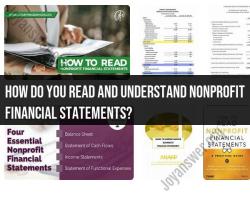How to easily decide where to invest?
Streamlining investment decisions can be achieved by following a systematic process and considering your financial goals, risk tolerance, and time horizon. Here's a simplified guide to help you make investment decisions:
Set Clear Financial Goals:
- Define your short-term and long-term financial objectives. Are you investing for retirement, buying a home, or funding your child's education?
- Determine the time horizon for each goal, as it will influence your investment strategy.
Assess Your Risk Tolerance:
- Understand how much risk you're comfortable taking. Are you willing to accept market fluctuations for potentially higher returns, or do you prefer lower-risk investments?
Diversify Your Portfolio:
- Don't put all your eggs in one basket. Diversify your investments across different asset classes (stocks, bonds, real estate, etc.) to spread risk.
- Consider diversifying within asset classes as well. For stocks, diversify across industries and regions.
Consider Investment Vehicles:
- Choose the right investment vehicles based on your goals:
- Retirement: Contribute to employer-sponsored plans (e.g., 401(k)) and IRAs.
- General Investing: Consider brokerage accounts, mutual funds, ETFs, and individual stocks.
- Real Estate: Explore real estate investment trusts (REITs) or direct real estate investments.
- Fixed Income: Invest in bonds or bond funds for stable income.
- Emergency Fund: Maintain a separate high-yield savings account for emergencies.
- Choose the right investment vehicles based on your goals:
Research Investments:
- Conduct thorough research on potential investments.
- For stocks, analyze company financials, growth prospects, and industry trends.
- For bonds, evaluate credit quality and interest rate risk.
- Read prospectuses and fund fact sheets for mutual funds and ETFs.
Consider Dollar-Cost Averaging:
- Invest a fixed amount regularly (e.g., monthly) rather than trying to time the market. This strategy reduces the impact of market volatility.
Seek Professional Advice:
- Consult a financial advisor if you're unsure about your investment choices or need personalized guidance.
- Consider robo-advisors for automated, low-cost investment management.
Monitor Your Investments:
- Regularly review your portfolio to ensure it aligns with your goals and risk tolerance.
- Rebalance your portfolio as needed to maintain your desired asset allocation.
Stay Informed:
- Keep up with financial news and market trends, but avoid making impulsive decisions based on short-term fluctuations.
Be Patient:
- Investing is a long-term endeavor. Avoid reacting to market noise and stick to your investment strategy.
Review Tax Implications:
- Understand the tax implications of your investments and consider tax-efficient strategies.
Stay Committed:
- Stay committed to your investment plan even during market downturns. Historically, markets have recovered over time.
Remember that there's no one-size-fits-all approach to investing, and what works best for one person may not be suitable for another. It's essential to tailor your investment strategy to your unique financial situation and goals. Additionally, consider seeking advice from a qualified financial advisor to help you make informed decisions.











